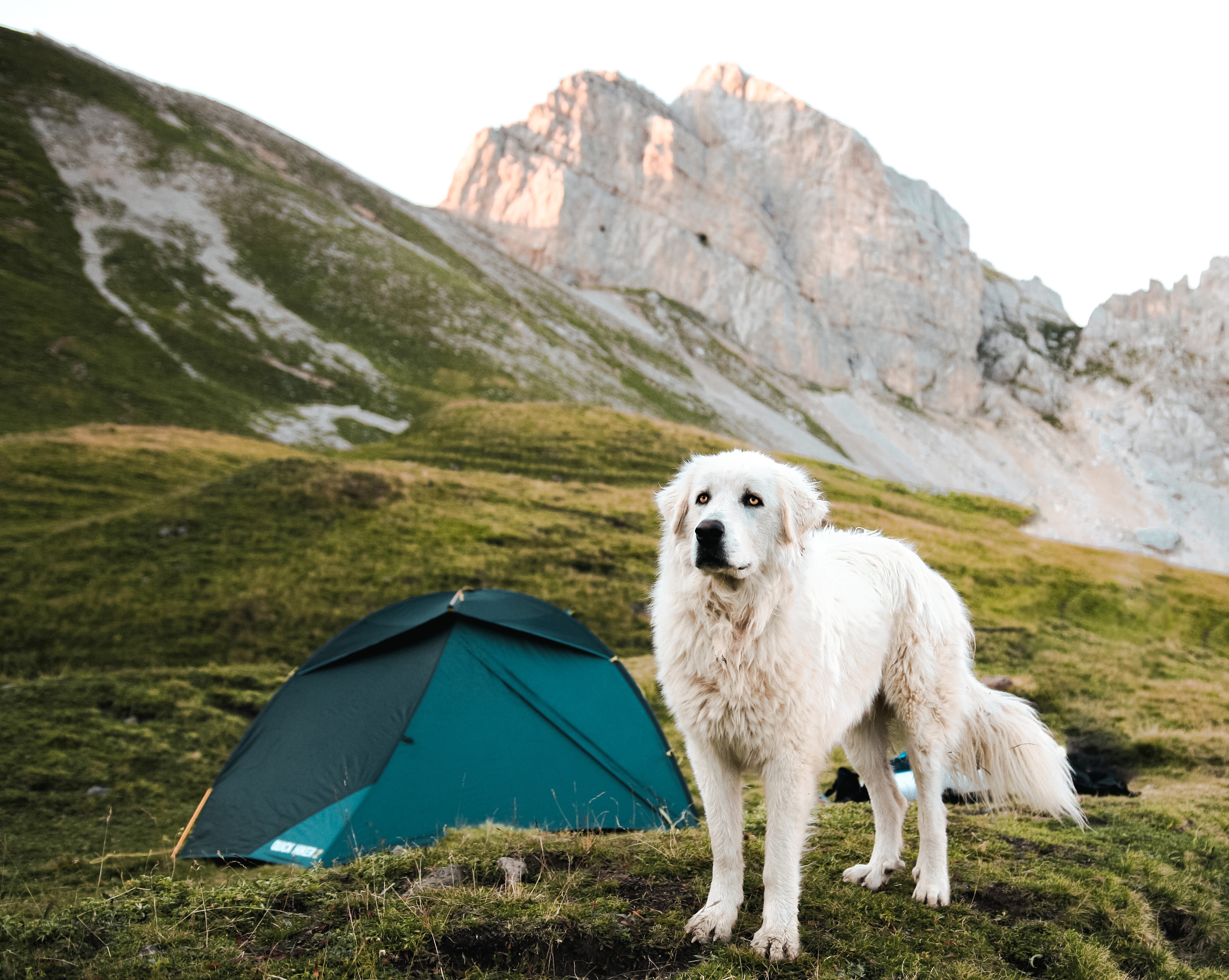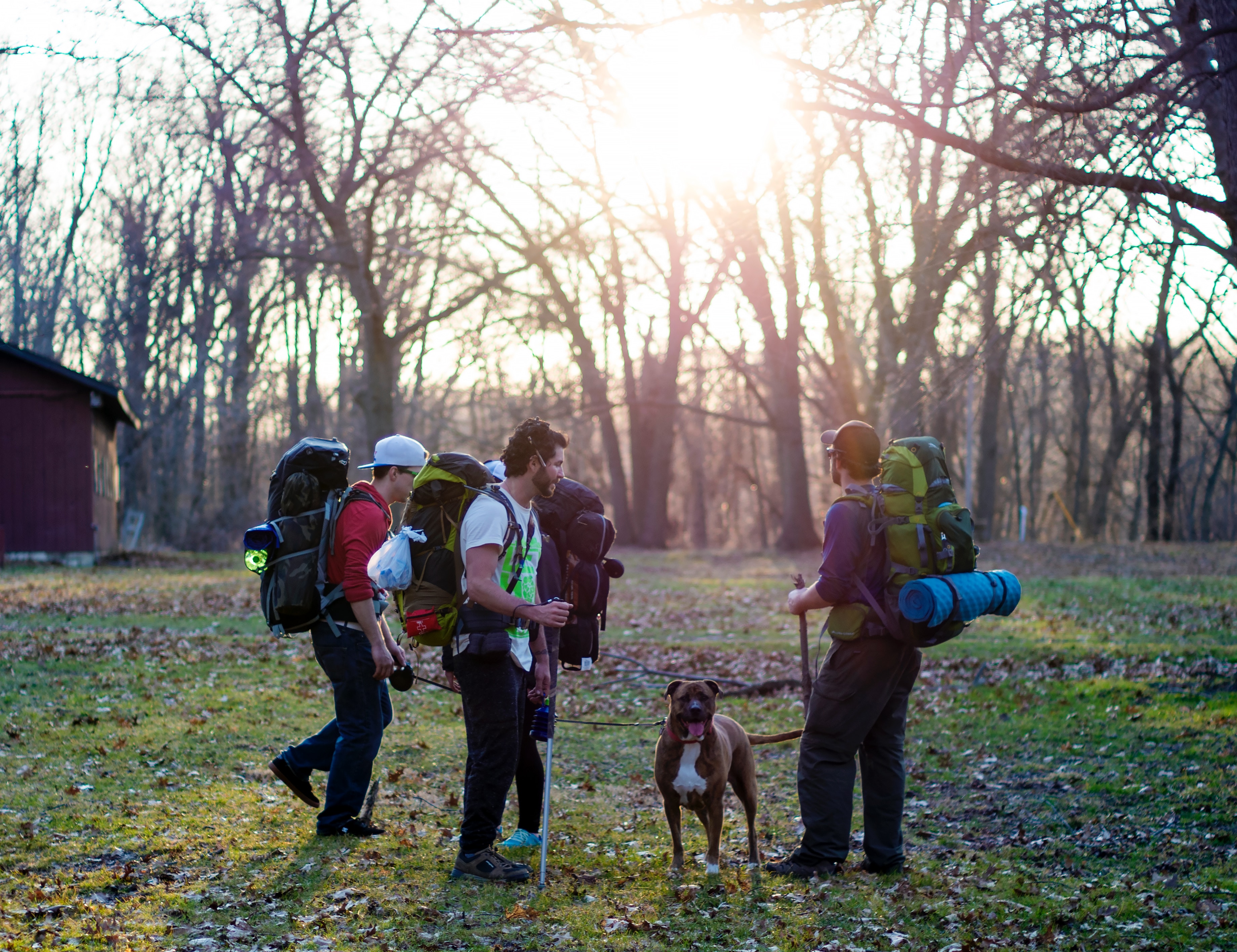
Heading out into the wilderness with your favorite four-legged companion is a great way to strengthen your bond and have a fantastic time. Most dogs love exploring the great outdoors, and with you by their side, it’ll be an amazing bonding experience. However, hiking and camping occasionally present a variety of risks. Traveling with your dog alongside can increase some of these risks, which means it’s essential that you’re properly equipped and take the necessary safety precautions when hitting the trail.
Be prepared
Much like travelling with a baby, hiking and camping with a dog is all about being prepared. Carrying all the equipment you’ll need to deal with any potential event is a must. Cutting corners can put you in a messy situation, both figuratively and literally.
Here’s a checklist of the equipment you should pack to have the best possible hiking and camping experience, whatever the weather.
Before you go…
- Microchip your dog and fit them with a name tag that displays your phone number
- Make sure they’re vaccinated and are treated with a flea and tick prevention spray
- Check that the distance you plan to hike is one your dog can comfortably cover
- Consider your dog’s anxiety and think twice if he or she is skittish or does not like the cold or the dark
- Make sure they heel on command when off the leash and are controllable and non-aggressive to humans and wildlife
The items to pack…
A doggy backpack
A trail pack that fits around your dog’s body with pockets and pouches for important items is a wise investment. It should contain poop bags, at least two towels, treats, a spare leash, toys, a harness, a doggie first aid kit and a rain/cold weather jacket. These are some of the best doggy backpacks available. As a general rule, a dog should only carry a quarter of its body weight, although that may change depending on its size, age and strength. You also should familiarise your dog with the pack before your hike.
It’s also worth considering: if your dog can’t handle a pack or doesn’t take well to wearing one, you’ll need to add the expected weight of supplies for you dog to your own pack. For some experienced or distance hikers, the additional weight may be manageable, but if you’re trekking through a new destination, it could be an overwhelming amount even with just a small increase. You can’t care for your pup if you’re not caring for yourself, so be sure to pack and plan accordingly.
First aid kit
A small first aid kit should be carried in your doggy backpack and include the following items:
- Bandages and gauze pads
- Hydrogen peroxide to treat any cuts
- Scissors with rounded tips to trim the hair around wounds
- Tweezers to remove ticks and foreign objects stuck in wounds
Collapsible dog bowls
Carrying collapsible food and water bowls and taking plenty of fresh food and water with you will keep your dog fed and watered throughout the trip. It will also avoid the risk of drinking from potentially unsafe water sources. You should also think about all the exercise your dog will be doing and take extra food and water to compensate.
Doggy sleeping bag
Most of our pampered pooches are not prepared for temperatures that can drop well below freezing at night. Taking a dog sleeping pad or sleeping bag to elevate them off the ground will help to maintain their temperature at night. There are lightweight, water-resistant sleeping bags out there that can be compressed into a small pouch and carried in your dog’s trail pack. Here are some doggy sleeping bags you may want to consider.
Collar light
It gets awfully dark when you’re sleeping under the stars and your dog can easily lose their way. A collar light will help to keep your best buddy visible, whatever he or she is up to.
Safety considerations when hiking and camping with dogs

As well as packing everything you’re likely to need during your trip, there are also several very important safety considerations to ensure you both have the best possible time.
- Don’t overestimate your dog’s capabilities
Even if your dog regularly accompanies you on long walks, hiking on uneven, steep, jagged or slippery terrain is a whole different ball game. You should also think about the weather. Wet and cold conditions can take their toll during the autumn and winter months, while the hot temperatures in the summer can be just as damaging to your dog’s health. It’s essential to take regular breaks and offer your dog water every half an hour.
- Keep your dog leashed
Keeping your dog on the leash is the best way to protect against dangerous wildlife and potentially poisonous plants. Snakes, bears, mountain lions and elk are just a few of the animals that can cause harm to you and your dog. Keeping your dog leashed will also prevent it from disturbing other hikers.
- Make sure it’s under control
Dogs that are not properly trained and do not follow commands are a danger to themselves, wildlife and other hikers. To make sure they’re safe in hazardous environments, your dog should be kept under control at all times. If it doesn’t respond to your commands, it should be left at home.
- Protect those paws
Walking on hot, cold and jagged ground can do serious damage to your pooch’s paws. Whether it’s the snow and ice of winter or the hot dirt and cinder of the summer months, it’s a good idea to pack a pair of booties that can provide some much-needed protection.
- Don’t forget the vet
It’s always a good idea to give your dog a health check-up before your trip. Make sure your dog’s vaccinations are up to date and carry any medical supplies you may need with you so you’re ready for any situation.
Stock up on doggy medical supplies
As we mentioned, hiking with pets is an incredibly rewarding experience. Traveling through nature, exercising, and seeing the beautiful countryside can be a great boon for both personal health, and the health of your pets. But take care of all the needs and necessities before you’re stuck on the trail without them.
It’s also important to consider your dog’s comfort level with hiking and outdoors experience. While it might seem like a great idea to take a long hike through the country, dogs need to be conditioned for more strenuous activity just like people do. If your dog has a more sedentary lifestyle in general, it’s a good idea to get them comfortable with exercise and progressively build them up through longer and longer walks.
Once you’ve got a happy, healthy dog be sure to stop by your vet and make sure they’re all good for the environment and season wherever you plan to hike! A regular checkup and making sure they’re up to date on vaccinations and other meds is even more important if you’re hiking through unfamiliar territory.
At BCP Veterinary Pharmacy, we supply the leading medical products used by veterinarians and owners to care for their dogs. Shop online and place your order today.


